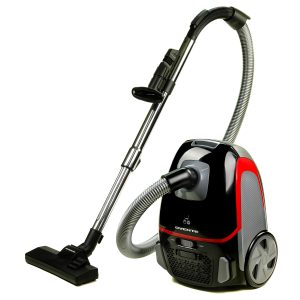Electric vacuum cleaners have revolutionized the way we clean our homes and spaces. With their powerful suction, convenience, and advanced features, these appliances have become an essential part of modern households. In this blog post, we will explore the world of electric vacuum cleaners, their evolution, benefits, and the technologies that make them so effective.
I. The Evolution of Vacuum Cleaners:
- Early Manual Sweepers: Before the advent of electric vacuum cleaners, people relied on manual sweepers, which involved using brooms, brushes, and dustpans to clean floors and surfaces.
- Introduction of Electric Vacuum Cleaners: The first electric vacuum cleaner was invented by Hubert Cecil Booth in 1901. It featured a large unit that needed to be transported by horse-drawn carriage.
- Portable and Upright Models: Over time, vacuum cleaners became more compact and portable. Upright models with a motorized brush roll and detachable canisters for dust collection became popular.
II. Benefits of Electric Vacuum Cleaners:
- Efficient Cleaning: Electric vacuum cleaners offer powerful suction capabilities that effectively remove dust, dirt, pet hair, and allergens from various surfaces, including carpets, hardwood floors, and upholstery.
- Time-saving: With their motorized brushes and efficient suction, electric vacuum cleaners can clean large areas quickly, saving valuable time and effort.
- Versatility: Modern electric vacuum cleaners come with various attachments and accessories that allow for cleaning different surfaces, reaching tight spaces, and tackling specific cleaning tasks.
- Improved Indoor Air Quality: Electric vacuum cleaners equipped with HEPA filters capture and trap fine particles, allergens, and pollutants, resulting in improved indoor air quality.
- Convenience: Electric vacuum cleaners offer features like cordless operation, lightweight designs, and easy-to-empty dust canisters, making the cleaning process more convenient and user-friendly.
III. Technologies in Electric Vacuum Cleaners:
- Cyclonic Technology: Cyclonic vacuum cleaners use centrifugal force to separate dirt and debris from the airflow, preventing clogging and maintaining consistent suction power.
- HEPA Filtration: High-Efficiency Particulate Air (HEPA) filters capture microscopic particles and allergens, preventing them from being released back into the air during vacuuming.
- Brushroll Technology: Motorized brushrolls agitate carpets and dislodge embedded dirt, improving the cleaning efficiency on carpeted surfaces.
- Smart Features: Some electric vacuum cleaners come with smart features like Wi-Fi connectivity, app control, and voice commands, allowing users to schedule cleaning sessions and monitor cleaning progress remotely.
IV. Maintenance and Care:
- Regular Cleaning: To maintain optimal performance, it’s important to clean the dust canister, filters, and brushrolls regularly. Follow the manufacturer’s instructions for proper maintenance.
- Filter Replacement: Filters should be replaced periodically, as recommended by the manufacturer, to ensure maximum filtration efficiency.
- Proper Storage: Store the electric vacuum cleaner in a clean and dry area, protecting it from dust and potential damage.
- Servicing and Repairs: If the vacuum cleaner requires servicing or repairs, contact a professional or authorized service center to ensure safety and proper functioning.
Conclusion: Electric vacuum cleaners have transformed the way we clean our homes, providing efficient, convenient, and powerful cleaning solutions. With advanced technologies and innovative features, these appliances continue to evolve, making cleaning tasks easier and more effective.



















Add Comment